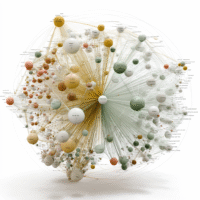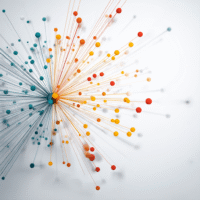
Discover Simplicity with AI Lab itinai.com
- Smart AI sales
- Smart AI support
- Custom AI development
🌐 Customer Service Chat

Custom AI Solutions for Your Business
We specialize in crafting unique AI applications to meet your specific needs. Whether it’s machine learning or natural language processing, we’ve got the right AI solution to help you achieve your business goals.
Choose the collaboration format that suits you or suggest your own

Free AI Audit
For companies just starting to explore AI possibilities
Express AI Potential Assessment
AI Audit (Self-Implementation)
General Strategy and Recommendations
Free
No initial investment required, a win-win option

AI Automation of Business
For businesses looking to reduce costs and implement AI independently
In-Depth Analysis of Business Processes
AI Strategy Development
Selection of Solutions and Training for Your Team
$49 per hour
Budget savings through independent AI implementation

Dedicated AI Team
Custom development for those striving for the best
Team of 5 AI Experts, Personalized Approach
Up to 10 AI Variations and Scenarios
Integration with Business Solutions
$199 per hour
More than 50% savings compared to maintaining your own team
Unleash Your Creative Potential with AI Agents
Competitors are already using AI Agents
Business Problems We Solve
- Automation of internal processes.
- Optimizing AI costs without huge budgets.
- Training staff, developing custom courses for business needs
- Integrating AI into client work, automating first lines of contact

Large and Medium Businesses

Startups

Offline Business
100% of clients report increased productivity and reduced operational costs.
-
Corporate Lawyer – Drafting initial contract templates or retrieving precedent clauses from legal archives.
-
Tender/Proposal Specialist – Drafting answers to RFP questions using document templates and previous proposals.
-
B2B Sales Manager – Automatically generating personalized proposals or responses based on CRM history and industry data.
-
Content Manager – Aggregating information from internal sources to generate SEO content or social posts.
-
Training Program Manager – Generating course outlines and answering questions about learning paths or certification procedures.
-
Legal Operations Analyst – Generating standard document packages, retrieving legal process steps and compliance logs.
-
Risk Analyst – Generating scenario briefs and referencing historical incident data to support assessments.
-
Internal Communications Manager – Drafting memos, FAQs, or internal campaign messages using past materials and tone/style guides.

AI Customer Support
Enhance your customer support with our AI-powered assistant. It uses artificial intelligence to analyze documents, contracts, and previous interactions, reducing response times and providing personalized support. Empower your team, improve customer satisfaction.

AI Document Assistant
Unlock valuable insights and make data-driven decisions with our AI Insights Suite. We index all your documents and data. Get smart decision support with our AI-driven solution. It indexes documents, offers valuable insights, and assists in making informed choices, saving you time and boosting productivity.

AI Scrum Bot
Streamline your agile project management with our AI Scrum Bot. This intelligent assistant helps teams by answering questions, facilitating backlog management, and organizing retrospectives. Powered by artificial intelligence, it enhances collaboration, efficiency, and productivity in your scrum process.

AI Sales Bot
AI Sales Bot – your new teammate that never sleeps! It converses with customers in fully natural language across all channels, answers questions round the clock, and learns from your sales materials to keep conversations insightful and engaging. It’s your next step towards simplified, efficient, and enhanced customer interactions and sales processes.

Start Your AI Business in Just a Week with itinai.com



You’re a great fit if you:
- Have an audience (even 500+ followers in Instagram, email, etc.)
- Have an idea, service, or product you want to scale
- Can invest 2–3 hours a day
- You’re motivated to earn with AI but don’t want to handle technical setup
AI news and solutions
-
MDM-Prime: Revolutionizing Masked Diffusion Models for Enhanced AI Efficiency
Understanding MDM-Prime MDM-Prime represents a significant leap in the realm of generative models, particularly for those involved in artificial intelligence research and application. This framework is designed to address common challenges faced by AI researchers, data…
-
“Enhancing Robotic Adaptability: DSRL’s Latent-Space Reinforcement Learning Breakthrough”
Robotic control systems have come a long way, especially with the rise of data-driven learning methods that replace traditional programming. Instead of relying solely on explicit instructions, today’s robots learn by observing and mimicking human actions.…
-
University of Michigan Unveils G-ACT: A Scalable Solution to Mitigate Programming Language Bias in LLMs
Understanding the Challenges of Code Generation with LLMs Large language models (LLMs) have transformed how we interact with technology, particularly in generating code for scientific applications. However, the reliance on these models for programming languages like…
-
Build Efficient Data Analysis Workflows with Lilac: A Comprehensive Coding Guide for Data Professionals
Understanding the Target Audience The target audience for “A Coding Guide to Build a Functional Data Analysis Workflow Using Lilac” consists mainly of data professionals, data analysts, and business intelligence developers. These individuals work across various…
-
“Unlocking Dexterous Robotics: Introducing Dex1B, a Billion-Scale Dataset for Advanced Hand Manipulation”
Understanding the Dex1B Dataset The Dex1B dataset represents a breakthrough in the field of robotics, particularly for researchers and industry professionals focused on dexterous hand manipulation. These individuals often face challenges, such as data scarcity and…
-
Build Custom AI Tools: Enhance Your AI Agents with Machine Learning and Statistical Analysis
Building Custom AI Tools for Data Analysis Creating custom tools for AI agents is crucial for enhancing their analytical capabilities. This article explores how to build a powerful data analysis tool using Python, specifically designed for…
-
Revolutionizing Rare Disease Diagnosis: DeepRare’s AI-Powered Solution for Clinicians
Understanding the Target Audience DeepRare is designed with a specific audience in mind: healthcare professionals, particularly those specializing in rare diseases, along with researchers in medical diagnostics and bioinformatics. These individuals often face significant challenges in…
-
Tencent Open Sources Hunyuan-A13B: Revolutionizing AI with a 13B Parameter MoE Model for Researchers and Developers
Understanding the Target Audience for Tencent’s Hunyuan-A13B The Tencent Hunyuan-A13B model is designed with a specific audience in mind: AI researchers, data scientists, and business managers in tech-driven industries. These individuals are often tasked with developing…
-
Getting Started with Gemini CLI: A Developer’s Guide to Boosting Productivity
Understanding the Target Audience The Gemini Command Line Interface (CLI) is tailored for developers, software engineers, and technical project managers. These users generally have a solid grasp of coding and command-line tools. Their main challenges often…
-
Unlock Creative Potential with Alibaba’s Qwen-VLo: The Future of Multimodal Content Generation
Understanding the Target Audience for Qwen-VLo The target audience for Alibaba’s Qwen-VLo includes designers, marketers, content creators, and educators. These professionals often struggle with the demands of creating high-quality visual content efficiently. Their main challenges revolve…
-
Getting Started with MLFlow: A Practical Guide for Evaluating Large Language Models
Understanding MLflow for Evaluating Large Language Models MLflow has emerged as a robust tool for managing the machine learning lifecycle, and its recent enhancements now allow for the evaluation of Large Language Models (LLMs). This guide…
-
Unbabel TOWER+: Revolutionizing High-Fidelity Translation in Multilingual AI Models
Understanding the Target Audience The introduction of TOWER+ has significant implications for various stakeholders, including business leaders, AI researchers, and developers focused on machine translation and natural language processing. These groups face common challenges, such as…
-
Polaris Models: Revolutionizing Scalable Reinforcement Learning for AI Reasoning
Understanding the Target Audience The development of Polaris-4B and Polaris-7B primarily caters to AI researchers, machine learning engineers, and business leaders who are keen on scalable reasoning models. These groups are often on the lookout for…
-
Build a Multi-Tool AI Agent with Nebius and Llama 3 for Developers and Researchers
Building a Powerful Multi-Tool AI Agent with Nebius This tutorial explores the creation of an advanced AI agent using Nebius, specifically leveraging components like ChatNebius, NebiusEmbeddings, and NebiusRetriever. By utilizing the Llama-3.3-70B-Instruct-fast model, this agent aims…
-
Mercury: Revolutionizing Code Generation with Ultra-Fast Diffusion-Based Language Models
Understanding the Target Audience for Mercury The audience for Inception Labs’ Mercury primarily consists of software developers, data scientists, and technology managers. These professionals are on the lookout for efficient coding solutions to tackle their day-to-day…
-
Google DeepMind’s AlphaGenome: Revolutionizing DNA Mutation Prediction for Genomic Researchers
Understanding AlphaGenome Google DeepMind has introduced AlphaGenome, a groundbreaking deep learning model that aims to enhance our understanding of genetic mutations. This model is particularly relevant for genomic researchers, bioinformaticians, and healthcare professionals who are focused…
-
MEM1: Revolutionizing Memory Management for Efficient Long-Horizon Language Agents
Understanding the Target Audience The research on MEM1 primarily targets AI researchers, data scientists, and business professionals who are engaged in the development and implementation of language agents. These individuals typically work within academic institutions, research…
-
“Unlock Developer Productivity with Google AI’s Open-Source Gemini CLI”
Introduction to Gemini CLI Google has recently launched Gemini CLI, an innovative open-source command-line AI agent that integrates the Gemini 2.5 Pro model directly into the terminal. This tool is specifically designed for developers and technical…
-
Privacy Risks in LLM Reasoning: New AI Research Insights
Personal LLM Agents and Privacy Risks Large Language Models (LLMs) are becoming vital as personal assistants, but their rise brings significant privacy concerns, particularly around how they handle sensitive user data. Personal LLM agents often have…
-
MIRIAD: A Game-Changer Dataset for Accurate Medical AI Solutions
In recent years, the integration of artificial intelligence into healthcare has gained momentum, fueled by the promise of large language models (LLMs) to enhance medical decision-making. Yet, the journey is fraught with challenges as these models…
Unified by Technology
Our teams are a diverse group of talented individuals working remotely from different corners of the world. With members proficient in seven languages, we value and embrace diversity. However, what truly unites us is our shared passion for the language of modern technology. We come together to collaborate, innovate, and harness the power of cutting-edge technology to create exceptional solutions.

























